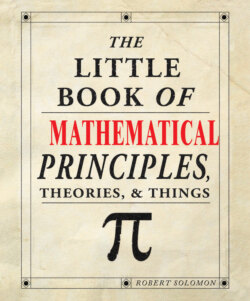Читать книгу The Little Book of Mathematical Principles, Theories & Things - Robert Solomon - Страница 10
1850 BC Eygpt The Greatest Pyramid
ОглавлениеA frustum of a pyramid is a pyramid with its top cut off. An ancient Egyptian manuscript gives a method for calculating the volume of this.
_______________
Ancient Egypt is particularly famous for the construction of the Pyramids. The engineering skills that went into their construction have, unfortunately, been lost to us. Likewise we can now only guess at the mathematical skills the Egyptians possessed.
Take a solid like a cone or a pyramid, which slopes uniformly from its base to a point at the top. If we cut a slice off the top the result is a frustum. A yoghurt pot is an example of a frustum of a cone.
The Moscow papyrus, dating from about 1850 BC, contains a set of rules for finding the volume of a frustum of a pyramid. It goes:
Given a truncated pyramid of height six and square bases of side four on the base and two at the top. Square the four, result 16.
Multiply four and two, result eight. Square the two, result four.
Add the 16, the eight and the four, result 28.
Take a third of six, result two.
Multiply two and 28, result 56.
You will find it right.
Following these rules, this method gives a formula for the volume as:
1/3 x 6 (42 + 2 x 4 + 22) = 56.
This does give the correct volume.
Generalizing, if the frustum has height h, a square top of side r and a square base of side R, the method gives the following formula for its volume:
1/3h (R2 + Rr + r2)
The illustration shows truncated pyramids.
which is correct. No indication is given for how this method was reached. Was it by experiment, or from theory?
This mathematical result was described (by a mathematician, mind you) as the “Greatest Egyptian Pyramid.”
